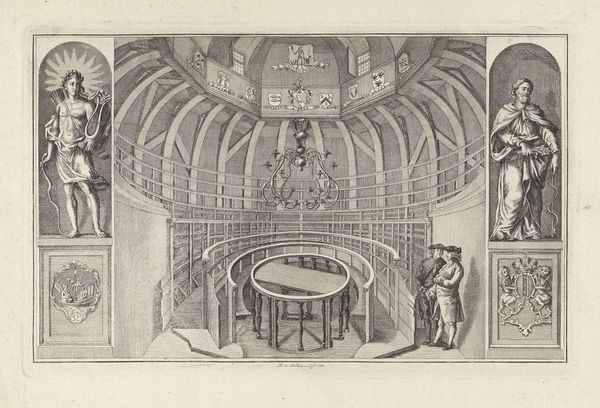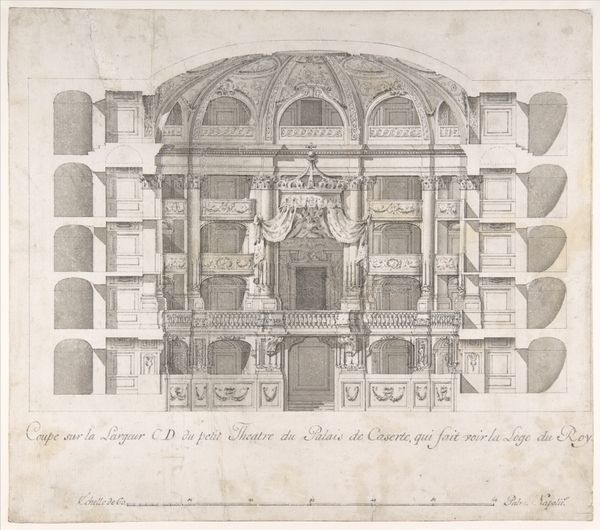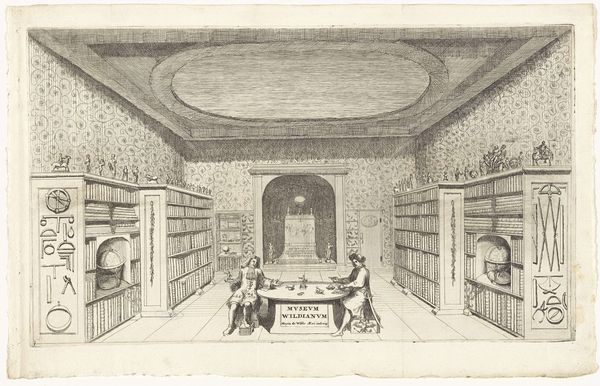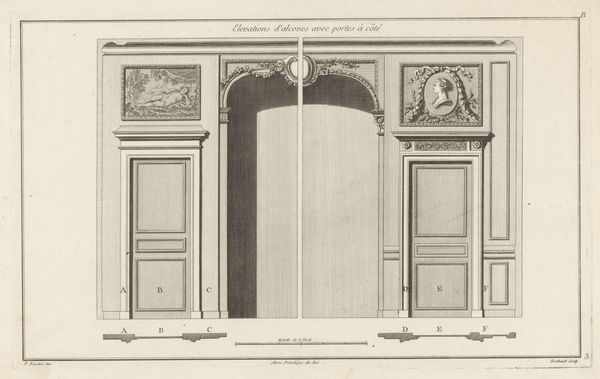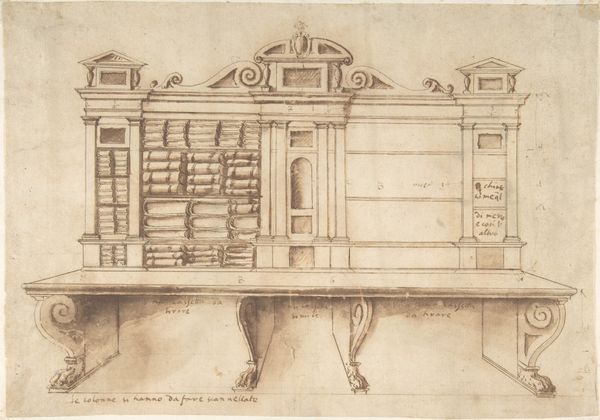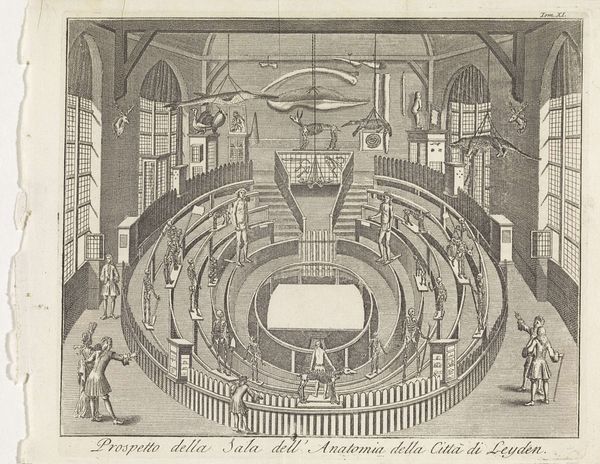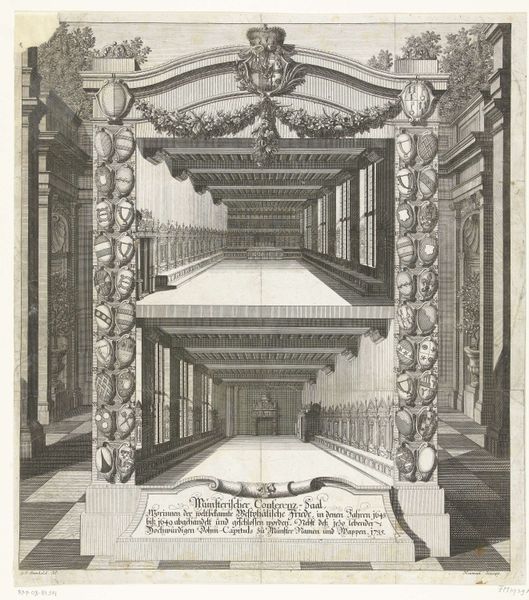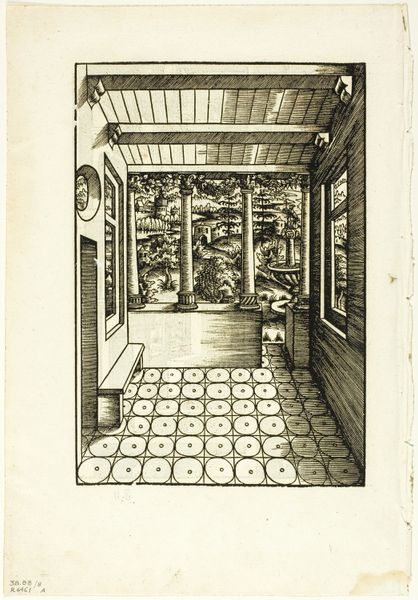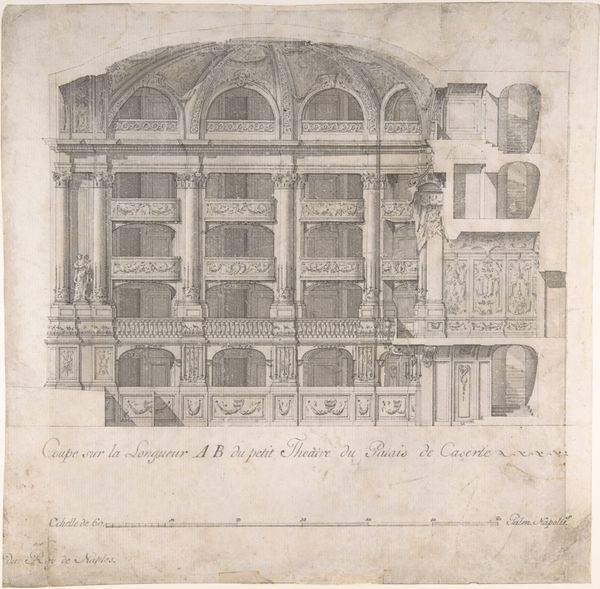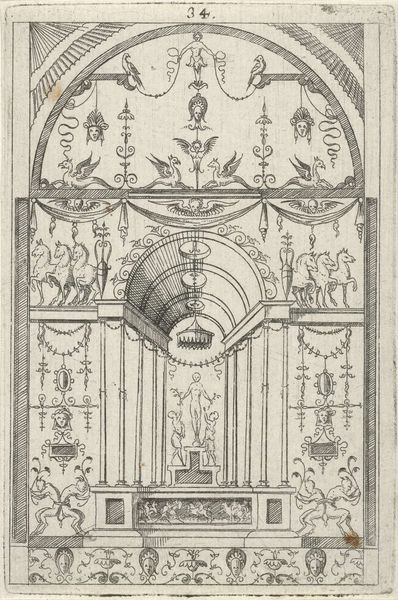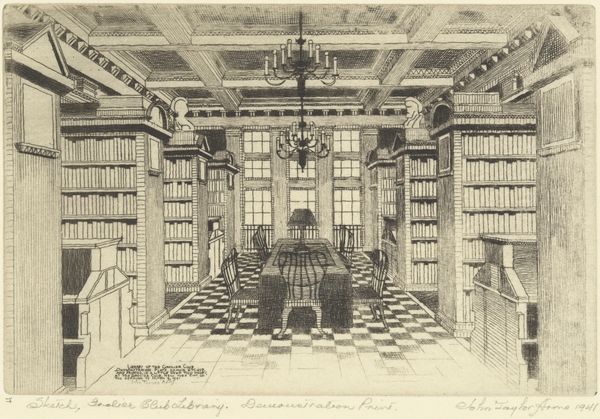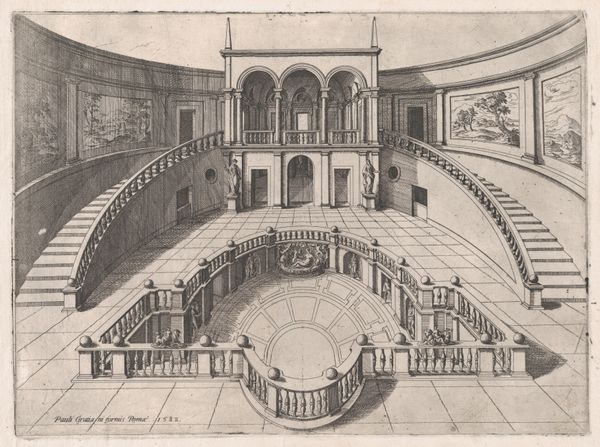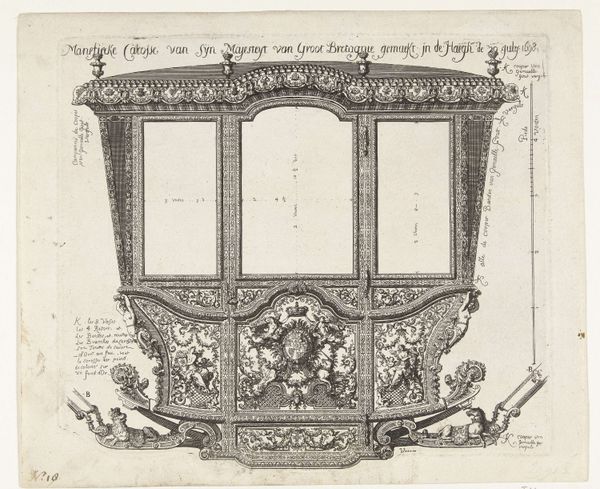
print, engraving, architecture
#
baroque
# print
#
landscape
#
genre-painting
#
engraving
#
architecture
Dimensions: height 169 mm, width 204 mm
Copyright: Rijks Museum: Open Domain
Curator: This engraving is entitled "Prieel bij Kasteel Rosendael," or "Arbor at Rosendael Castle," dating to between 1675 and 1711. It's part of the Rijksmuseum collection. Editor: The immediate impact is one of enclosed serenity. The detail in the vaulted foliage is astonishing, almost vibrating with intricate patterns. It really traps the eye. Curator: Indeed. The "Prieel," or bower, offers insight into the leisure activities and garden architecture favored by the elite during that era. Rosendael Castle was—and is—known for its spectacular gardens. Images like this served to document and perhaps even publicize its splendor. The inscription "Viridis Pergula, ad penetrale Regis" suggests this "green pergola" offered a retreat fit for a king. Editor: Notice how the architectonics and verdant embellishment converge; the way the lines create that interior vista of structural density that soften the eye as we approach the statue and fountain at its heart. And look, isn't that figure on the right framed like a character on a stage? Curator: Absolutely. These garden spaces became backdrops for social performance. Consider the carefully arranged setting: it highlights nature refined and contained to project wealth, taste and control. The print circulated among certain social groups to celebrate status. Editor: The engraving technique emphasizes texture, doesn’t it? I mean, look how that hatched linework renders an image both visually pleasing and strangely alive. All those minute differentiations…they are masterfully executed. Curator: The texture emphasizes how such controlled spaces still required great investments to retain an idealized version of natural beauty; even paradise demands upkeep, which in turn projects a form of control to audiences in a newly printed and circulated medium. Editor: It brings a whole new dimension of class critique to bear. Curator: It is through engravings like these that gardens transcend simply as designed spaces—they turn into cultural records with their own narratives. Editor: Focusing on the visual, that central axis does provide stability, but I think what this tells us about how we interact with spaces really drives to how it was understood. Curator: Right, by unpacking its various contexts from social function to public reception, we start seeing it more holistically and comprehensively as history rather than art, as we engage ourselves in how a moment becomes timeless.
Comments
No comments
Be the first to comment and join the conversation on the ultimate creative platform.
